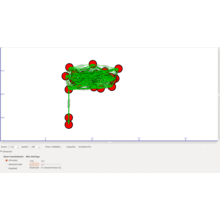Tag Archive: '2016 ns3 projects'
It is sometimes unavoidable to use loosely coupled coils in applications, like biomedical devices, for transferring electric energy wirelessly. However, coil misalignment causes degradation of the power transfer efficiency. It is well known that the power transfer efficiency of classical parallel coils is primarily determined by the quality factors of the coils and the coupling […]
This paper presents a chronological review of the research carried out on antennas in low-temperature cofired ceramics (LTCC) technology over the last ten years or so. Major breakthroughs in LTCC technologies and its shortcomings are highlighted. The current state of the art of LTCC-technology-based antennas is then evaluated. All realizable features of the LTCC-based antennas, […]
Wireless power transfer (WPT) is a kind of power transmission technology with which load devices can be supported to take power from the power source in a non-contacting way. Hollow solenoidal coils are used as resonant coils extensively in engineering projects which are usually analyzed based on magnetostatic fields. In practice coils are often excited by […]
This paper investigates power allocation for reliable downlink transmission in cellular networks subject to quality-of-service (QoS) constraints. The reliability of data transmissions is assured by hybrid automatic repeat request protocol with incremental redundancy (HARQ-IR). By developing and evaluating the effective throughput of the HARQ-IR protocol for the downlink transmission under buffer-limited QoS constraints, we propose […]
We consider the problem of distributed detection of a mean parameter corrupted by Gaussian noise inwireless sensor networks, where a large number of sensor nodes jointly detect the presence of a weak unknown signal. To circumvent power/bandwidth constraints, a multilevel quantizer is employed in each sensor to quantize the original observation. The quantized data are transmitted […]
Content downloading from vehicles is becoming increasingly popular, but it also meets challenges dueto the limited number of road-side units (RSUs) and the expensive cost of 3G/LTE downloads. Cooperative LTE + vehicle-to-vehicle (V2V) downloading schemes can significantly improve the efficiency and reduce costs. However, selfish users are motivated to minimize their own LTE downloading costs, so they would […]
Modeling and prediction of temporal sequences is central to many signal processing and machine learning applications. Prediction based on sequence history is typically performed using parametric models, such as fixed-order Markov chains ($n$-grams), approximations of high-order Markov processes, such as mixed-order Markov models or mixtures of lagged bigram models, or with other machine learning techniques. This paper […]
In mobile social networks (MSN), with the aim of conserving limited resources, egotistic nodes might refuse to forward messages for other nodes. Different from previous work which mainly focuses on promoting cooperation between selfish nodes, we consider it from a more pragmatic perspective in this paper. Be specific, we regard selfishness as a native attribute of a system and […]
Low latency, high throughput, and fairness are the stringent performance requirements of data centernetworks. For web applications continue to thrive, data center must remain effective by addressing these challenges. While most of the challenges have been handled by data center specific transport protocols (e.g. DCTCP), these transport protocols are not default options for data center users. Free […]
This paper focuses on incentivizing cooperative behavior in community-based autonomous networkingenvironments (like mobile social networks, etc.), in which through dynamically forming virtual and/or physical communities, users voluntarily participate in and contribute resources (or provide services) tothe community while consuming. Specifically, we proposed a simple but effective EGT (Evolutionary Game Theory)-based mechanism, VPEF (Voluntary Principle and round-based Entry Fee), to drive […]

 Click Here to watch our latest output video using NS3 simulator
Click Here to watch our latest output video using NS3 simulator  Click Here to watch our latest projects screenshots using NS3 simulator
Click Here to watch our latest projects screenshots using NS3 simulator